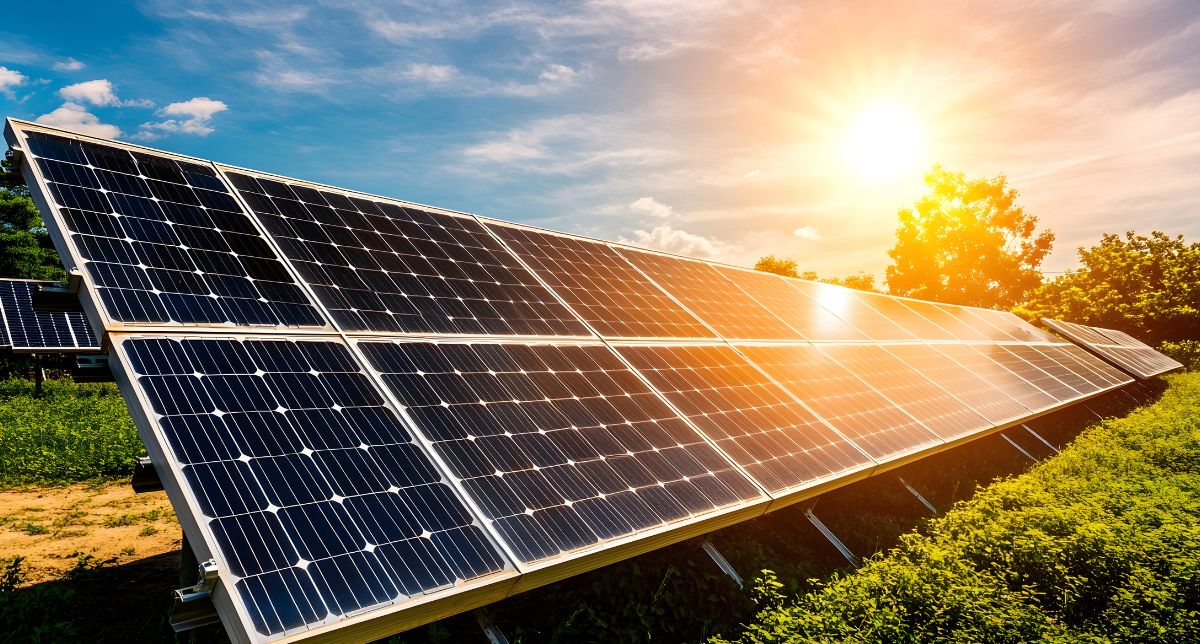New report “Delivering on the UAE Consensus,” published in October 2025 by IRENA under the presidency of COP30 in Brazil, shows a record 582 GW of new renewable additions in 2024 — but insufficient progress in global energy efficiency.
Strong progress in renewable energy in 2024
The report from the International Renewable Energy Agency (IRENA) reveals that 2024 was the biggest year in history for renewables, with 582 GW of new installed capacity — a 15% increase compared to 2023.
Of this total, 452 GW came from solar photovoltaics, accounting for more than three-quarters of global additions. The segment grew 27% year-on-year, driven by lower costs, incentive policies, and maturing supply chains.
Wind power added 114 GW (105 GW onshore and 9 GW offshore), while hydropower contributed 9.3 GW, reaching 1,277 GW of global installed capacity. Bioenergy and geothermal sources grew modestly, adding around 6 GW.
In regional terms, growth remains concentrated: Asia, Europe, and North America accounted for 85% of total global capacity. Asia led with 413 GW added — 71% of the global total.
The 2030 gap: current pace remains insufficient
Despite the record performance, IRENA warns that the current pace is not enough to achieve the goal of tripling renewable capacity by 2030, as agreed under the UAE Consensus at COP28 in Dubai.
If the 2024 growth rate continues, the world would reach 10.3 TW of renewable capacity by 2030, 0.9 TW short of what is needed to limit global warming to 1.5 °C. To close this gap, the world must install 1,122 GW per year until the end of the decade — nearly double the current rate.
The report projects that, if successful, the expansion will make solar and wind account for 61% of global electricity generation capacity by 2030, surpassing fossil fuels for the first time in history.
Energy efficiency: the weakest link in the transition
While renewables are advancing, energy efficiency continues to move at an alarmingly slow pace. Between 2023 and 2024, global energy intensity improved by only 1%, far below the 4% annual improvement needed to meet the target of doubling efficiency by 2030.
IRENA warns that, to make up for the delay, the world must now achieve a 5% annual improvement between 2025 and 2030 — an unprecedented challenge.
The document highlights that energy consumption continues to grow about 2% per year, while the global economy expands 3%, resulting in only marginal intensity improvements. Among the recommended solutions are cross-sectoral policies involving governments, the private sector, financial institutions, and research centers.
One key milestone was the creation of the Global Energy Efficiency Alliance (GEEA) during COP29 in 2024, led by the United Arab Emirates, aimed at accelerating investment and technology exchange in energy efficiency.

Transport and electrification: meeting the demand challenge
The report also points to progress in transport electrification, although still insufficient. The number of electric vehicles (BEVs and PHEVs) reached 57 million in 2024, expected to hit 360 million by 2030 to align with the 1.5 °C pathway. This will require a six-fold increase in growth and a rapid expansion of charging infrastructure — currently at 5.2 million public charging points.
In the building sector, energy renovation rates remain at just 1% per year, about one-third of what is needed to significantly cut emissions from buildings.
Recommendations for governments and investors
The report dedicates an entire section to urgent actions for policymakers, organized around five key pillars:
- Policy and regulation: include measurable targets in the NDCs (Nationally Determined Contributions) aligned with the UAE Consensus, create carbon pricing mechanisms, and ensure predictability through long-term contracts (CfDs, PPAs).
- Infrastructure and systems: digitalize power grids, accelerate project permitting, and invest in flexibility and energy storage.
- Finance: expand access to credit and public guarantees to reduce project risk in emerging economies.
- Value chains: promote local manufacturing, public-private partnerships, and fair trade of critical minerals.
- Capacity building and inclusion: invest in technical training, just-transition programs, and greater participation of women in STEM fields.
In addition, IRENA emphasizes the need for coherence between industrial and environmental policies, integrating fiscal incentives (tax credits, subsidies, loan guarantees) and adequate infrastructure to attract sustainable investment.
Financing and international cooperation
According to the agency, meeting the 2030 targets will require at least USD 5 trillion in new investments. Developing countries — particularly in Africa and Latin America — should be prioritized through credit lines and climate finance mechanisms.
The report underscores the role of multilateral mechanisms and the private sector in mobilizing resources and stresses that COP30, to be hosted in Brazil (GRA), must serve as a turning point for the practical implementation of the UAE Consensus.
A call to action: COP30 as a decisive milestone
With less than five years to 2030, IRENA concludes that the world is still off track, though not without hope.
The report states that 91% of the new renewable installations in 2024 already produce electricity cheaper than fossil fuels, showing that the energy transition is not only environmentally necessary but also economically advantageous.
For Brazil, which will host COP30 in Belém, the challenge is to lead by example — consolidating policies for regional integration in clean energy, bioenergy, green hydrogen, and technological innovation.
“The success of the UAE Consensus will depend on the speed and scale of actions implemented before 2030. Every year counts,” the report highlights.

Comment